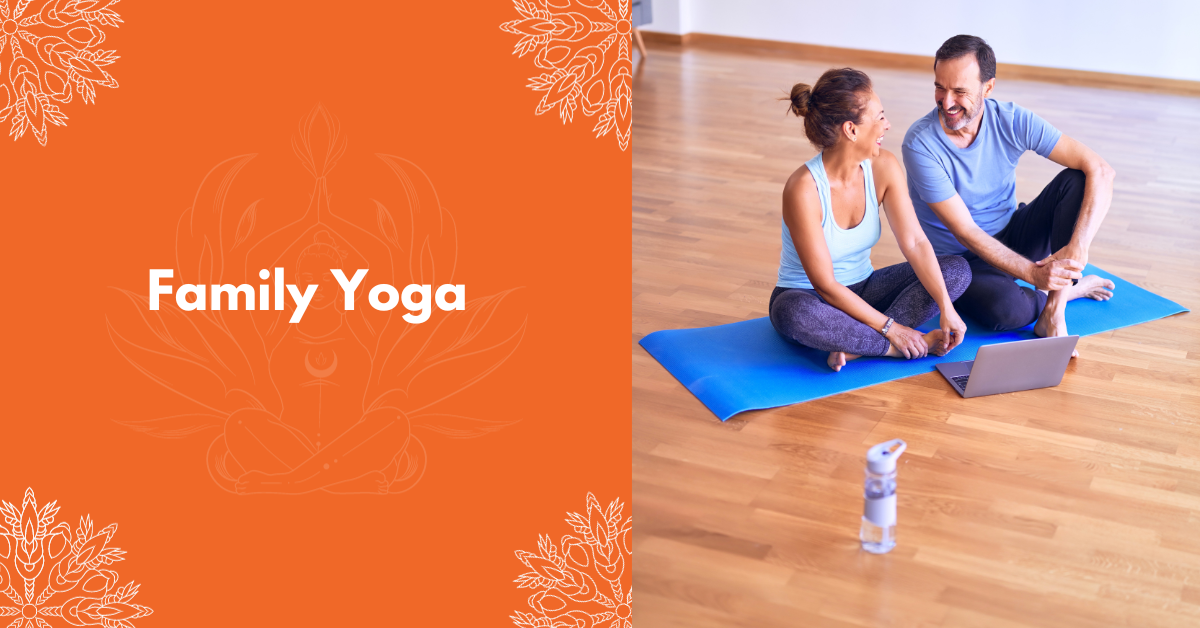
Family Yoga: Strengthening Bonds and Finding Inner Peace
“Discover the joy of 🧘♂️ Family Yoga! Strengthen bonds and find inner peace with our expert tips. Join the fun today! 💕 FamilyYoga”
In the hustle and bustle of our modern lives, it’s becoming increasingly essential to find ways to connect with our loved ones and prioritize our well-being.
Family yoga is a wonderful practice that combines physical activity, mindfulness, and togetherness. In this comprehensive guide, we’ll explore how to do family yoga, share valuable tips and precautions, delve into various techniques, unveil the numerous benefits, and even provide a diet plan.
Let’s embark on this enriching journey toward stronger family bonds and inner peace.
How to Do Family Yoga
Finding the Right Space
Start by designating a peaceful and uncluttered space in your home or garden where you and your family can comfortably practice yoga together. Ensure there’s enough room for everyone to spread out their mats.

Selecting Appropriate Clothing
Choose comfortable and breathable clothing that allows for free movement. Make sure family members are dressed in suitable yoga attire to ensure flexibility and comfort during the practice.
Yoga Mats and Props
Each family member should have their own yoga mat. You may also want to have props like blocks and straps available for those who may need them.
Warm-Up and Cool Down
Begin with a gentle warm-up that includes basic stretches and deep breathing. After the practice, cool down with relaxation and meditation techniques to calm the mind.
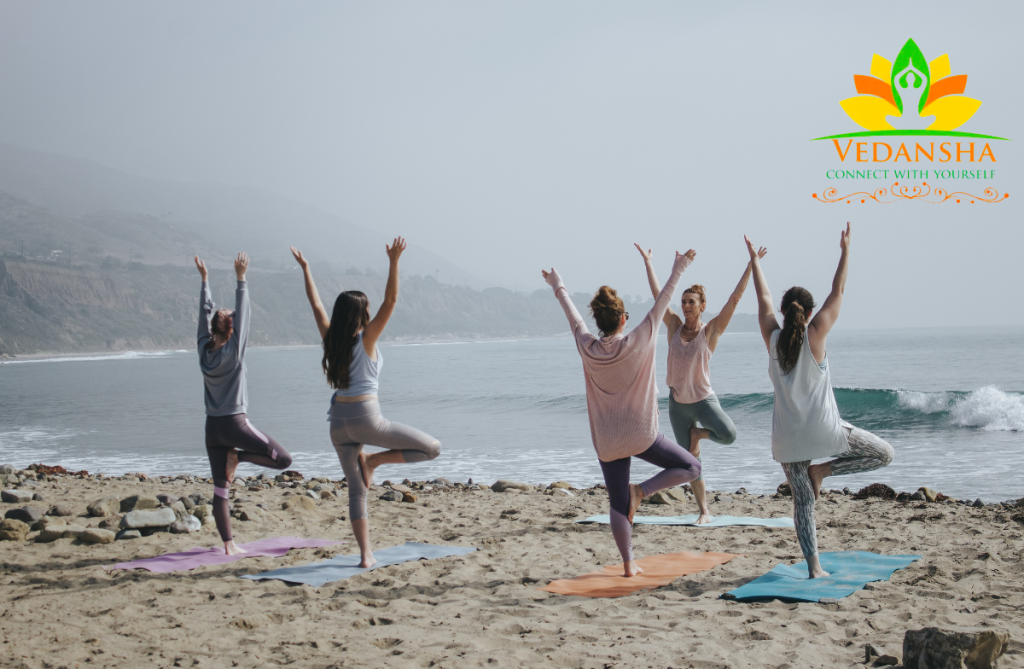
Tips and Precautions
- Start Slow: If your family is new to yoga, begin with basic poses and gradually progress to more advanced ones. Patience is key.
- Listen to Your Body: Encourage family members to honor their bodies and avoid pushing too hard. Yoga should be comfortable and pain-free.
- Stay Hydrated: Have water nearby and remind everyone to stay hydrated throughout the practice.
- Assist and Encourage: Help children and beginners with their form and alignment. Offer encouragement and support to build confidence.
- Safety First: Ensure a safe environment, free from hazards. Be cautious with challenging poses, especially with children.
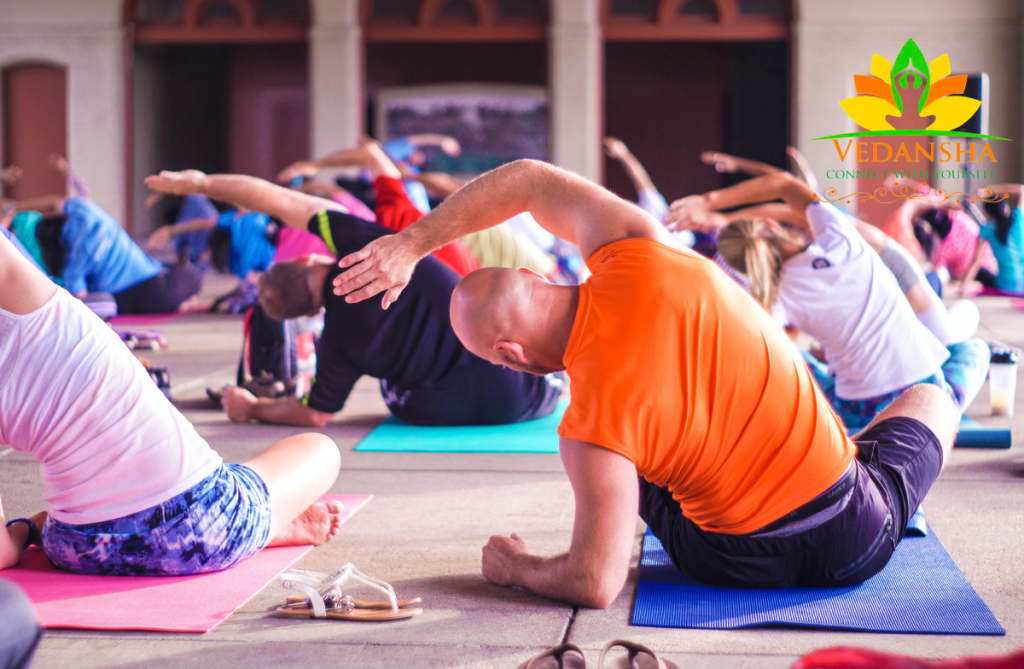
Family Yoga Techniques
Partner Poses
1. Partner Boat Pose (Navasana)
How to Do It:
- Sit facing each other with your knees bent and your feet flat on the floor.
- Hold hands with your partner, keeping your elbows slightly bent.
- Lift your feet off the ground while leaning back slightly, creating a “V” shape with your bodies.
- Find your balance and engage your core to hold the pose.
Benefits:
- Strengthens the core and abdominal muscles.
- Encourages teamwork and trust between partners.
Engage in partner yoga poses like “partner boat” and “partner tree” to create a sense of unity and cooperation.
Animal Poses
1. Cat-Cow Pose (Marjaryasana-Bitilasana)
How to Do It:
- Begin on your hands and knees in a tabletop position.
- For the “Cat” pose, round your back and tuck your chin into your chest.
- For the “Cow” pose, arch your back, lift your head, and look forward.
- Alternate between these two poses with each breath, resembling a cat stretching and a cow grazing.
Benefits:
- Enhances spinal flexibility.
- Promotes a gentle massage of the spine.
- Encourages mindfulness and breath awareness.
Imitate various animals in your poses. For example, the “cat-cow” pose replicates the movements of a cat stretching and arching its back.
Storytelling Yoga

1. Choose a Theme or Story
Start by selecting a theme or story that resonates with your family. It could be a classic fairy tale, an adventure in the jungle, or a journey to a magical world. The chosen story will serve as the backdrop for your yoga practice.
2. Introduce the Story
Begin your family yoga session by introducing the chosen story. Encourage your family members to use their imagination and visualize the characters, settings, and events in the story. This sets the stage for the yoga adventure to come.
3. Yoga Poses as Story Elements
Assign specific yoga poses to different elements of the story. For example, if you’re telling a story about animals in the jungle, you can use animal-themed yoga poses like Lion’s Breath, Elephant Pose, or Cobra Pose to represent the characters in the tale.
Incorporate storytelling into your practice. Use yoga poses to act out parts of a story, making it engaging and fun for kids.
Benefits of Family Yoga
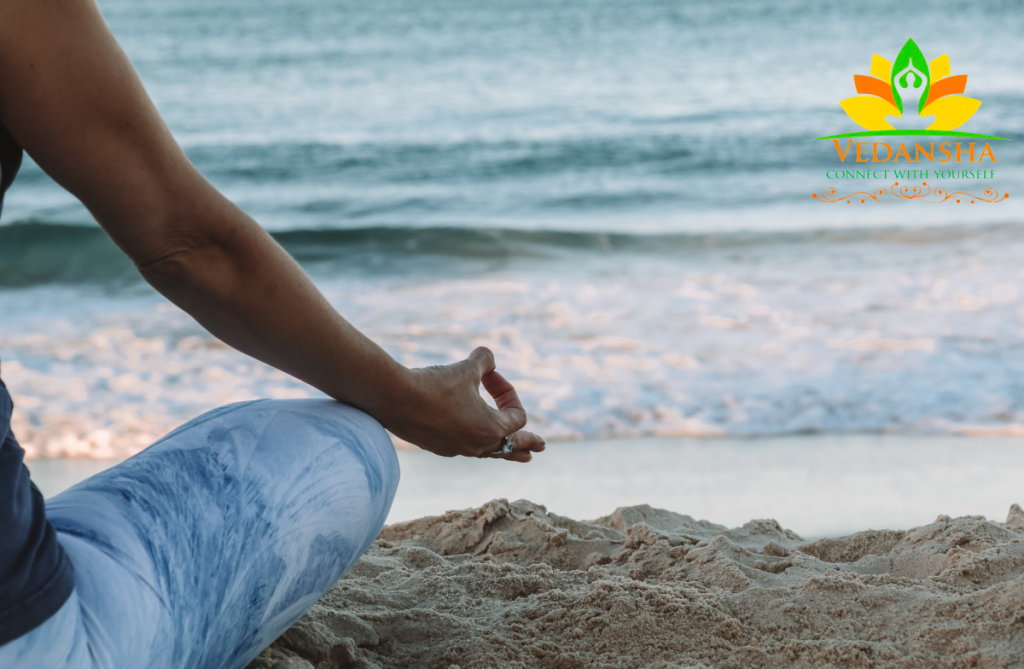
1. Strengthening Family Bonds
Family yoga provides an opportunity for family members to connect on a deeper level. Through shared experiences and collaborative poses, family members learn to support and trust one another, strengthening the bonds within the family.
2. Physical Health
- Improved Flexibility: Regular yoga practice increases flexibility, helping family members move more freely and reduce the risk of injury.
- Enhanced Strength: Yoga poses require the use of various muscle groups, contributing to overall strength and muscle tone.
- Better Posture: Yoga encourages proper alignment and awareness of posture, which can alleviate posture-related aches and pains.
3. Emotional Well-Being
- Stress Reduction: Yoga’s focus on breath and mindfulness helps reduce stress and anxiety, promoting emotional well-being for both children and adults.
- Enhanced Self-Awareness: Family members can develop a better understanding of their emotions and reactions, improving emotional regulation.
4. Improved Communication
Partner and group poses in family yoga necessitate effective communication to achieve balance and alignment. This enhances interpersonal skills and the ability to work together as a team.
5. Building Confidence
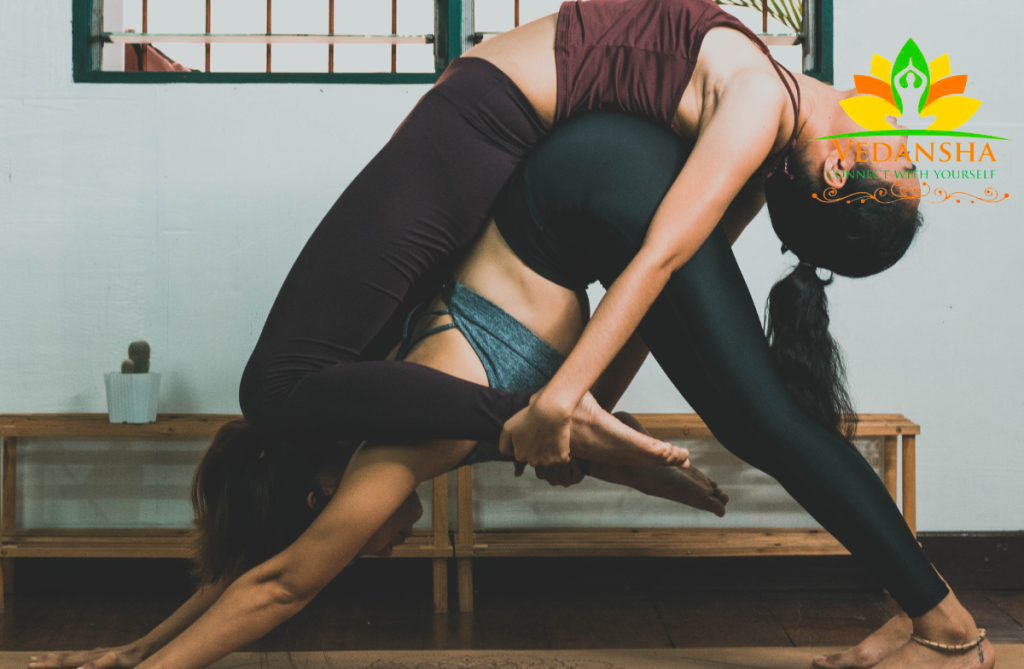
Family yoga allows children and beginners to build self-confidence as they gradually master poses and become more comfortable with their bodies and abilities.
Family Yoga Diet Plan
Morning
- Start the day with a glass of warm water with lemon.
- Have a wholesome breakfast with options like oatmeal, fruit smoothies, or whole-grain toast.
Lunch
- Opt for a balanced lunch with a variety of vegetables, lean proteins, and whole grains.
- Consider salads, whole-grain wraps, or quinoa bowls.
Evening
- Enjoy a light dinner consisting of soups, salads, or a light stir-fry.
- Avoid heavy, rich foods close to bedtime.
Foods to Avoid
- Sugary snacks and drinks
- Processed and fried foods
- Excessive caffeine
Conclusion
Family yoga is a wonderful way to bring your loved ones closer and prioritize health and well-being together. By following the tips, techniques, and diet plan outlined in this guide, you can embark on a journey toward physical and emotional wellness while strengthening the bonds that matter most in your life.
FAQs
1. Can children and elderly family members participate in family yoga?
Yes, family yoga can be adapted to suit the needs and abilities of participants of all ages. It’s an inclusive practice.
2. How often should we practice family yoga?
Aim for at least 2-3 sessions per week, adjusting the intensity and duration based on the family’s experience and preferences.
3. Do we need a yoga instructor?
While not necessary, having a certified yoga instructor can be beneficial, especially if your family is new to yoga. You can also follow online tutorials and videos.
4. Is it safe to practice family yoga during pregnancy?
Family yoga can be safe during pregnancy, but it’s crucial to consult with a healthcare provider and choose pregnancy-friendly poses.
5. What if someone in the family has a physical condition or injury?
Family members with specific conditions or injuries should consult a healthcare professional before engaging in family yoga and should practice under the guidance of an experienced yoga instructor who can modify poses as needed.
Remember, the goal of family yoga is not just achieving physical flexibility but also nurturing stronger, more connected relationships within your family. So, roll out your yoga mats, start your practice, and enjoy this enriching journey together.

